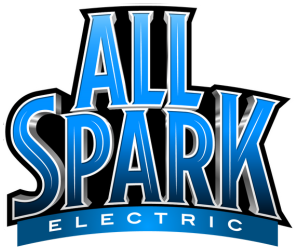When you run out of outlets at home or in the office, it’s tempting to grab a power strip and keep plugging things in. But before you connect your expensive electronics, it’s important to understand the difference between a power strip vs surge protector. At All Spark Electric, we’ve helped many Fort Worth homeowners after power surges damaged their devices—damage that often could have been avoided.
This guide breaks down the difference, explains why it matters, and helps you choose the right option for your needs.
What Is a Power Strip?
A power strip is a basic tool that gives you more outlets from a single wall socket. It usually has a row of plugs and may include an on/off switch. These are great for areas like home offices, workbenches, or TV setups.
However, most standard power strips do not protect against electrical surges. If lightning strikes nearby or your power turns back on after an outage, a surge can move through the strip and into your connected electronics. That’s because power strips are not designed to block or divert sudden voltage spikes. They simply allow more items to be plugged into the same outlet.
What Is a Surge Protector?
At a glance, a surge protector looks like a power strip. But inside, it’s built to handle more. Surge protectors include components like metal oxide varistors (MOVs) that redirect extra voltage away from your devices. This helps prevent serious damage to things like computers, TVs, routers, and other sensitive equipment.
Some models also have indicator lights. These show whether the surge protection is still active. That way, you know when it’s time to replace the unit.
Power Strip vs Surge Protector: Why It Matters
If you’re plugging in low-risk items like lamps or phone chargers, a power strip may be all you need. But when it comes to computers, smart TVs, gaming consoles, or any device with a microprocessor, a surge protector is the safer choice.
The cost difference is small, but the protection it offers can make a big impact. One power surge is all it takes to permanently damage expensive electronics. That’s why choosing correctly in the power strip vs surge protector debate can save you from costly repairs or replacements.
Power Strip vs Surge Protector in Fort Worth Homes
Fort Worth sees frequent storms and unpredictable power conditions. Thunderstorms, high winds, and power outages are common. Each of these can lead to power surges. When power comes back online suddenly, voltage spikes can flow through your home’s electrical system.
We’ve seen homeowners lose thousands of dollars in equipment from a single surge. Even major appliances like refrigerators, HVAC systems, and washers can be affected. In an area like Fort Worth, proper surge protection isn’t a luxury—it’s a necessity.
How to Tell If It’s a Surge Protector
Not all multi-outlet devices are surge protectors. Many people mistake a power strip for one, and that’s where problems begin.
Look for a joules rating—this number shows how much energy the unit can absorb. The higher the joules, the better the protection. You should also check for a status light. If the light is off, it usually means the protection is gone—even if the strip still powers your devices.
Finally, read the label or packaging. It should clearly say “surge protector,” “surge suppression,” or show a UL 1449 certification. If none of that is listed, it’s likely just a power strip.
When to Replace Your Surge Protector
Surge protectors don’t last forever. Each surge they absorb weakens their internal components. Even without a major lightning strike, they can wear out over time.
Replace your surge protector every three to five years. If the unit looks damaged, the light is off, or it’s been through a major storm, it’s time to replace it. Continuing to use a worn-out surge protector gives you no real defense—and leaves your electronics at risk.
Power Strip vs Surge Protector: Whole-Home Options
Most plug-in surge protectors only protect what’s plugged into them. For full protection, especially if you have high-end appliances or smart home systems, a whole-home surge protector is a better solution.
These systems are installed at your electrical panel. They protect everything—your HVAC system, kitchen appliances, garage door opener, and more. A whole-home system stops the surge before it enters your wiring, offering complete protection.
At All Spark Electric, we install whole-home surge protection systems designed to safeguard your home and all the electronics in it. These setups are especially useful for homes with solar panels, electric vehicle chargers, or home offices.
Call All Spark Electric for Power Strip vs Surge Protector Guidance
If you’ve ever asked yourself whether you need a power strip vs surge protector, the answer depends on what you’re trying to protect. Lamps and chargers might be fine with a power strip. But your expensive electronics? They deserve a surge protector—or better yet, a whole-home solution.
All Spark Electric helps Fort Worth homeowners protect what matters most. From choosing the right surge protector to installing advanced protection systems, we’ve got the knowledge and experience to keep your home safe.
Still not sure what you need? Contact All Spark Electric in Fort Worth today. Let’s find the surge protection setup that’s right for you.


